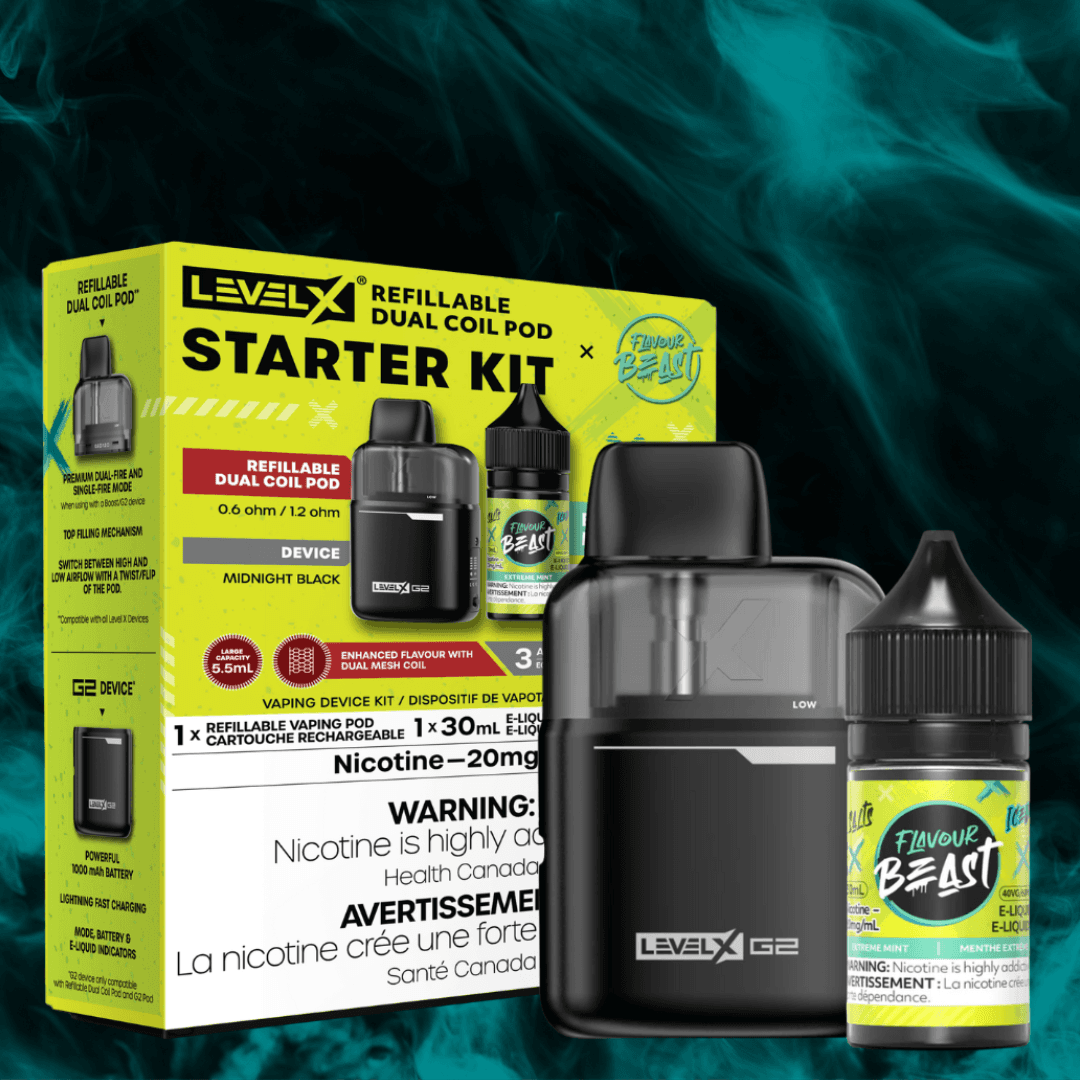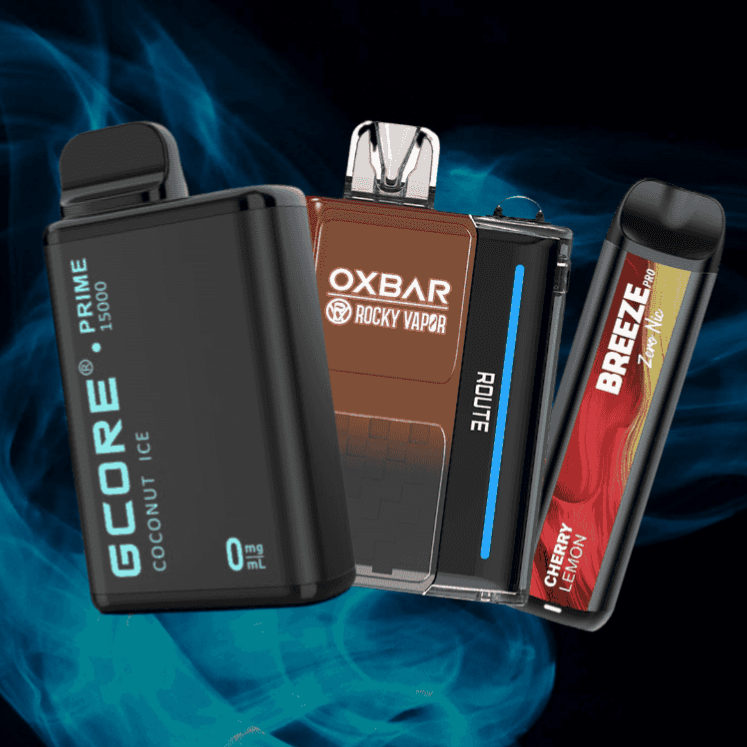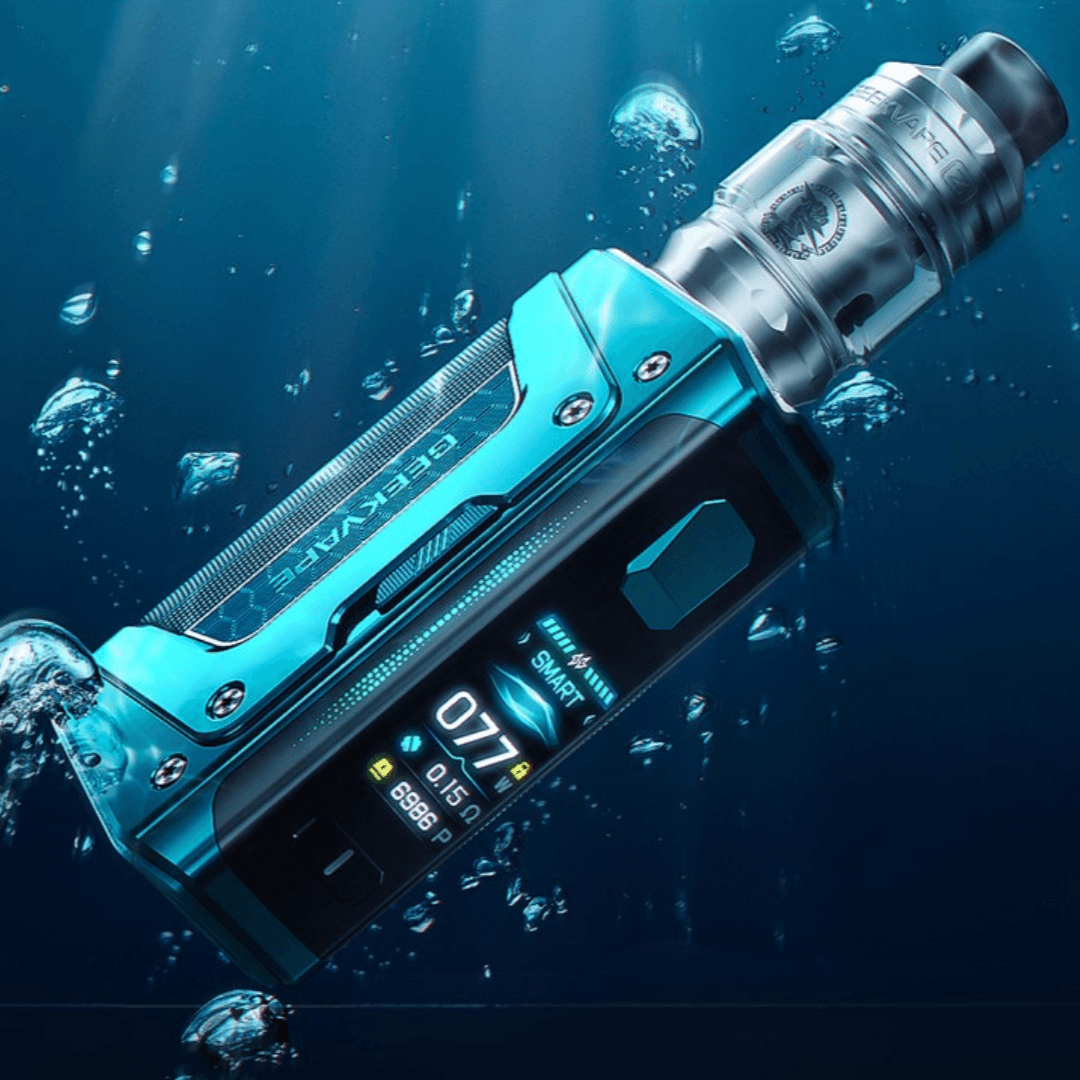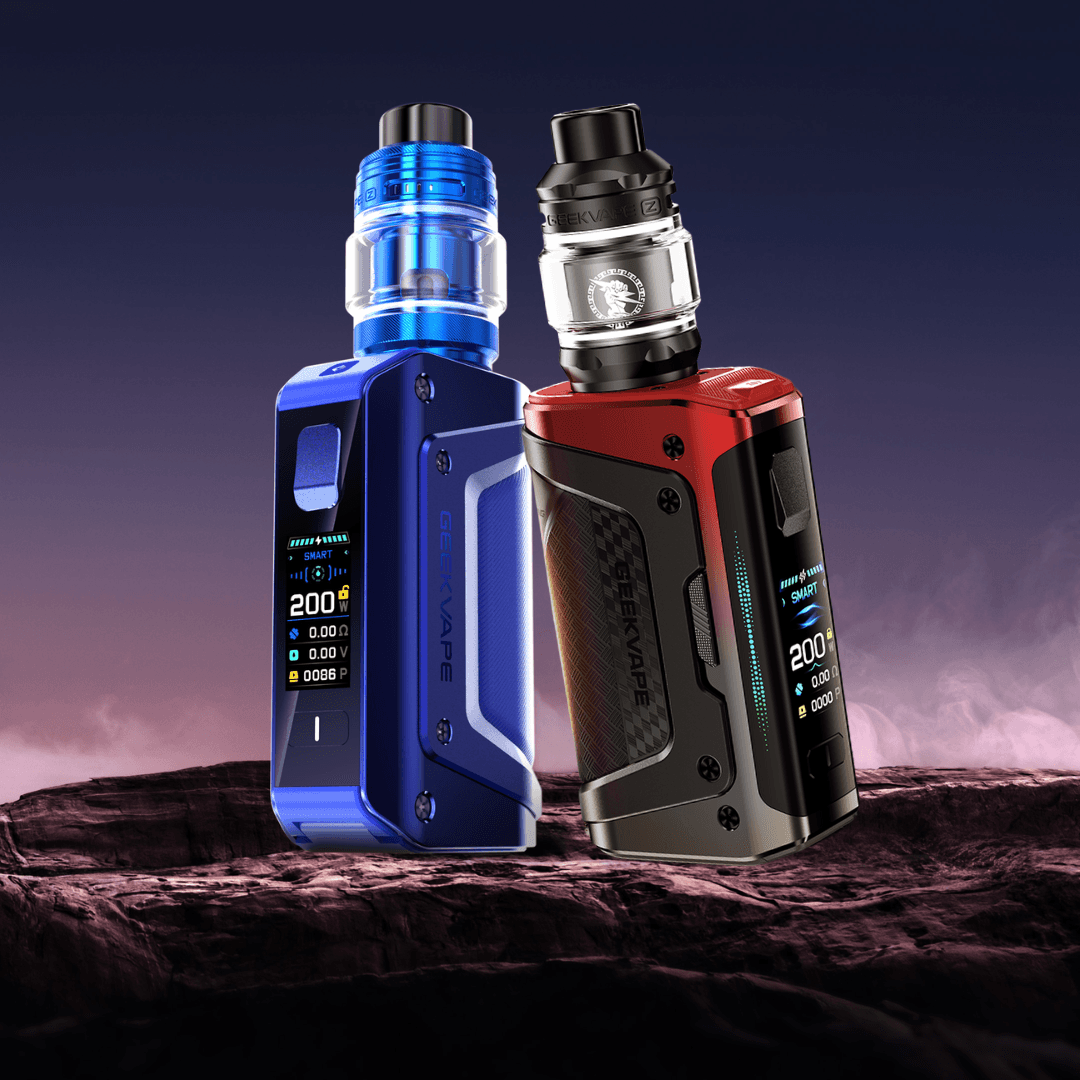The Complete Guide to Vaping: Facts, Brands, and Health Information
Vaping has rapidly gained popularity worldwide, revolutionizing the way people consume nicotine and flavours. Its influence is undeniable, with an ever-growing community of vapers. However, it's crucial to comprehend the ins and outs of vaping to make informed decisions. In this comprehensive guide, we will explore vaping facts, delve into its effects on health, and shed light on the intricacies of vaping devices. Whether you're a beginner or an experienced vaper, understanding vaping is key to an enjoyable and responsible experience.
I. Understanding Vaping and Its Effects
A. What is Vaping?
Vaping refers to the act of inhaling and exhaling aerosol, commonly known as vapor, produced by an electronic cigarette or similar device. Unlike traditional cigarettes, vaping devices do not burn tobacco but instead heat an e-liquid containing nicotine, flavourings, and other ingredients. This process creates a vapor that is inhaled by the user. Vaping devices come in various shapes, sizes, and styles. Prominent brands in the vaping industry include Flavour beast, STLTH, Geekbar, and the Caliburn ko ko, which offer a range of devices to suit different preferences and needs. From sleek pod systems to powerful box mods, these brands cater to both beginners and experienced vapers.The functioning of a vaping device involves several components, including a battery, a heating element (coil), and a tank or pod to hold the e-liquid. When the user activates the device, the battery supplies power to the coil, which heats up and vaporizes the e-liquid. The vapor is then inhaled through a mouthpiece, providing the user with a satisfying vaping experience.Understanding the basics of vaping is essential before delving into its effects on health and other aspects. In the following sections, we will explore the impact of vaping on overall well-being, the role of flavors and technology, and whether vaping can be an effective tool for smoking cessation.Stay tuned for the next section, where we discuss how vaping affects overall health and the influence of flavors and technology on vapers.
B. How Does Vaping Affect Overall Health?
When it comes to the health implications of vaping, there is ongoing debate and research. While vaping is often considered a less harmful alternative to traditional smoking, it is not without its potential risks. It is important to be aware of the following points:
- Potential Health Effects: Vaping is generally believed to be less harmful than smoking traditional cigarettes due to the absence of tobacco combustion and the reduction in harmful chemicals produced. However, e-cigarette aerosol may still contain potentially harmful substances such as nicotine, heavy metals, and flavouring chemicals. Long-term effects are still being studied.
- Vaping Facts and Statistics in Canada: In Canada, vaping has gained popularity among both adult smokers and young individuals. According to recent statistics, the prevalence of vaping among Canadian youth has increased, raising concerns about nicotine addiction and potential health risks. It is essential to stay informed about the latest facts and data regarding vaping in Canada.
- Comparison to Traditional Cigarettes: Vaping presents certain advantages over traditional smoking. Unlike cigarettes, which produce smoke through combustion, vaping devices heat the e-liquid to generate aerosol. This process eliminates the production of harmful tar and many other toxic chemicals associated with traditional smoking. Switching from cigarettes to vaping can significantly reduce exposure to harmful substances found in tobacco smoke.
- Benefits of Vaping over Cigarettes: Vaping offers several advantages compared to traditional smoking. It eliminates the unpleasant odor associated with cigarettes and reduces the risk of second-hand smoke, making it more socially acceptable in many settings. Vaping also provides a variety of flavours, allowing users to personalize their experience. Additionally, vaping may offer a smoother transition for smokers who are seeking to quit or reduce their tobacco consumption.
II. Exploring the Components of Vaping
A. The Role of Coils
Coils play a crucial role in vaping devices by heating the e-liquid and converting it into vapor. Coils consist of a wire, typically made of kanthal, stainless steel, or nichrome, that is wrapped into a coil shape. When the battery is activated, the coil heats up, vaporizing the e-liquid and creating the inhalable vapor. Coils come in various resistances, affecting the amount of heat generated and the overall vaping experience. Lower resistance coils produce more vapor and warmer hits, while higher resistance coils offer a cooler vape with less vapor production. It is important to select coils that are compatible with the specific vaping device and the desired vaping style.
B. Understanding Batteries
Vape batteries provide the necessary power to heat the coil and operate the vaping device. They come in different sizes and configurations, with rechargeable lithium-ion batteries being the most common in vaping devices. There are two primary types of vape batteries: integrated and removable. Integrated batteries are built-in and non-replaceable, requiring the entire device to be charged when the battery runs out. Removable batteries, on the other hand, can be easily removed and replaced, allowing for extended vaping sessions by carrying spare batteries.Popular brands such as Caliburn Ko Ko and Caliburn offer vaping devices with reliable built-in batteries. These devices are known for their convenience, portability, and user-friendly features, making them a popular choice among vapers.In the next section, we will further explore the components of vaping, including tanks or pods, and delve into the functionalities of these elements.
C. How Coils, Batteries, and Vapes Work Together
Coils, batteries, and vaping devices work together seamlessly to create the vaping experience. Let's take a closer look at how these components interact:
1. Coils: As mentioned earlier, coils play a pivotal role in vaping devices. When the battery supplies power to the coil, it heats up, causing the e-liquid to vaporize. The resistance of the coil affects the temperature and intensity of the vapor produced. Lower-resistance coils create more heat and vapor, while higher-resistance coils result in a cooler vape with less vapor production.
Proper maintenance of coils is essential for optimal performance. Over time, coils may accumulate residue from the e-liquid, affecting the flavour and vapor production. Regular cleaning and coil replacements are recommended to maintain the quality of the vaping experience.
2. Batteries: Vape batteries provide the necessary power to activate the coil and operate the vaping device. They store electrical energy that is converted into heat to vaporize the e-liquid. Whether integrated or removable, batteries need to be charged to ensure consistent performance.
Using batteries within their recommended specifications is crucial for safety. It is important to avoid overcharging, overheating, or exposing batteries to extreme conditions. Following the manufacturer's guidelines and using reputable batteries and chargers is essential to prevent accidents and prolong battery life.
3. Vaping Devices: Vaping devices, also known as mods or e-cigarettes, encompass the combination of coils, batteries, and other components necessary for vaping. They come in various forms, including box mods, pens, and pod systems. These devices provide the user interface, regulate power output, and allow customization of vaping settings.
Proper usage of vaping devices involves understanding the device's features, such as adjustable wattage, temperature control, and safety mechanisms. Adhering to user manuals, maintaining cleanliness, and handling devices responsibly contribute to a satisfying and safe vaping experience. By comprehending how coils, batteries, and vaping devices work together, vapers can make informed choices and ensure the longevity of their devices.
III. Vaping as a Smoking Cessation Tool
Vaping has been widely debated as a potential tool to aid in smoking cessation. Numerous studies and research have explored its effectiveness and compared it to traditional methods. While it is not without controversy, here are some key points to consider:
- Evaluation of Vaping as a Smoking Cessation Tool: Vaping has shown promise as an alternative for smokers looking to quit or reduce their tobacco consumption. Some studies suggest that vaping can help individuals transition away from traditional cigarettes by providing a nicotine delivery system without the combustion of tobacco.
- Reference to Relevant Studies and Research: Several studies have investigated the effectiveness of vaping as a smoking cessation tool. These studies analyze smoking cessation rates, nicotine dependency, and user experiences. It is important to review and consider the latest research findings and expert opinions to make informed decisions.
- Role of Flavors and Technology: The availability of various flavors in e-liquids has been identified as a significant factor in vaping's appeal and potential as a smoking cessation tool. Flavors can mimic the taste of traditional cigarettes or offer a wide range of enticing options. Additionally, advancements in vaping technology have led to the development of user-friendly devices that cater to smokers seeking an alternative nicotine delivery system.
It is essential to approach vaping as a smoking cessation tool with caution and seek professional guidance when making decisions about quitting smoking. Consulting healthcare professionals or cessation programs can provide personalized advice and support tailored to individual needs.
IV. Understanding Vaping Terminology and Ingredients
A. Explaining Disposable Devices
Disposable vapes are compact, self-contained vaping devices that are pre-filled with e-liquid and are designed to be discarded once the e-liquid is depleted. They offer convenience and simplicity for vapers who prefer a hassle-free experience. Disposable vapes are often draw-activated, requiring no buttons or settings adjustments. Popular brands such as Flavour beast, STLTH, and Geekbar offer disposable options with various flavours and nicotine strengths, catering to different preferences and tastes.
B. Introduction to Pod Systems
Pod systems are another popular type of vaping device known for their portability, ease of use, and versatility. They consist of two main components: a pod that holds the e-liquid and a battery or mod that powers the device. Pods can be either refillable or pre-filled with e-liquid, providing flexibility for vapers. Well-known brands such as Caliburn Ko Ko and Caliburn have gained recognition for their pod systems, offering reliable performance and user-friendly features.
C. Salt Nicotine vs. Freebase Nicotine
Nicotine, the addictive substance present in tobacco, can be found in e-liquids for vaping. Two common forms of nicotine used in e-liquids are salt nicotine and freebase nicotine.
- Salt Nicotine: Salt nicotine is a modified form of nicotine that allows for smoother inhalation and faster nicotine absorption compared to freebase nicotine. It is often used in higher concentrations in e-liquids, providing a more satisfying experience for vapers seeking a higher nicotine strength option.
- Freebase Nicotine: Freebase nicotine is the traditional form of nicotine found in cigarettes. It is known for its harsher throat hit at higher nicotine concentrations. Freebase nicotine is commonly used in lower concentrations in e-liquids and is favoured by vapers who prefer lower nicotine strengths.
The choice between salt nicotine and freebase nicotine depends on individual preferences, desired nicotine strength, and vaping experience. It is important to understand the characteristics and effects of each type when selecting e-liquids. In the next section, we will continue our exploration of vaping terminology and ingredients by discussing PG/VG ratios and delving further into the mechanics of nicotine in vapes.
D. Unveiling PG/VG Ratio
The PG/VG ratio is an essential aspect of e-liquids that determines the balance between propylene glycol (PG) and vegetable glycerine (VG) content. Let's take a closer look at their significance:
- Propylene Glycol (PG): PG is a thin, odourless, and colourless liquid that contributes to the throat hit and flavour intensity of the vape. It has a higher carrying capacity for flavours and provides a sharper throat hit. E-liquids with higher PG ratios are often favoured by those seeking a stronger throat hit and a more pronounced flavour experience.
- Vegetable Glycerine (VG): VG is a thicker, slightly sweet liquid that is responsible for vapor production and smoothness. It produces denser clouds of vapor and offers a smoother inhale. E-liquids with higher VG ratios are preferred by cloud chasers and those who enjoy a more substantial vapor production.
The PG/VG ratio in e-liquids can vary, with common ratios including 50/50, 70/30, or even higher VG concentrations for cloud enthusiasts. Finding the right balance depends on individual preferences for throat hit, vapor production, and flavour intensity.
V. Benefits of Vaping
Vaping offers numerous advantages over traditional smoking, contributing to its popularity among a wide range of individuals. Here are some notable benefits of vaping:
- Odor Reduction: Unlike traditional cigarettes, vaping produces vapor that quickly dissipates, leaving behind minimal lingering odors. This is particularly beneficial for those who want to enjoy nicotine without the social stigma or offensive smells associated with smoking.
- Variety of Flavors: Vaping provides an extensive range of flavors, allowing users to explore different taste profiles and find their favorites. From fruity and dessert flavors to menthol and tobacco blends, the diverse selection of e-liquid flavors adds excitement and personalization to the vaping experience.
- Cost Savings: Vaping can be more cost-effective in the long run compared to traditional smoking. While the initial investment in a vaping device and e-liquids is required, the ongoing costs can be significantly lower. Reusable devices and the ability to refill or replace components allow vapers to save money over time.
- Harm Reduction: Vaping is generally considered a less harmful alternative to traditional smoking. By eliminating combustion and the associated toxic byproducts, vaping reduces the exposure to harmful chemicals found in tobacco smoke. This harm reduction potential makes vaping an attractive option for smokers looking to switch to a potentially safer alternative.
Conclusion:
In conclusion, understanding vaping is crucial for both beginners and experienced vapers. We have explored the basics of vaping, including its definition, the role of coils and batteries, and how these components work together. We have also discussed the potential effects of vaping on overall health, the use of vaping as a smoking cessation tool, and the terminology and ingredients involved in the vaping experience.By staying informed about vaping facts, such as those specific to Canada, and considering the benefits and risks associated with vaping, individuals can make responsible choices that align with their preferences and goals. Whether you're looking to quit smoking, explore new flavors, or enjoy a less harmful nicotine delivery system, understanding vaping empowers you to navigate this evolving landscape.Remember, as with any recreational activity involving substances, moderation and responsible usage are key. If you are considering vaping or have questions, consult trusted sources, healthcare professionals, or vaping specialists for further guidance.Make informed decisions, enjoy the vaping experience responsibly, and stay up-to-date with the latest information in this ever-evolving realm.





